There’s no hiding that England’s performances in the Euros this summer have been sub-par for much of their time in the tournament – although they showed a slightly stronger attacking impetus in their quarter-final victory over Switzerland. A focus on the negatives has been a constant theme for England fans during this competition, and while many of the criticisms aimed at the team are somewhat justified (in terms of performance), there are positives to keep in mind from what Gareth Southgate’s side has shown thus far. Additionally, tournament football is an entirely different entity to week-to-week club football so it is unrealistic to expect them to steamroll their way to the final.
The Netherlands weren’t fancied by many prior to the tournament’s beginning, but with the competition’s third-best attacking output so far, they offer a clear threat that has proven to be difficult to combat. Fast-paced attacks and 1v1 dribbling has been key figures in the Netherlands’ tactics and could cause England a few issues on Wednesday in the semi-final.
This tactical analysis will provide insight into some significant tactical aspects to expect from both teams ahead of the fixture – the analysis will draw on key tactics displayed in their respective quarter-final appearances while also considering what we’ve seen from both sides before the previous round.
England
We mentioned positives and negatives in the intro of this analysis, and in this segment, we will be looking into both. Southgate’s formation change against Switzerland was widely reported in the build-up to the game, with the England manager looking to combat Switzerland’s 3-4-3 system. Aside from looking to cancel out Switzerland’s threat, the aim behind the switch was to allow the wing-backs to get more involved while also finding influential roles for Jude Bellingham and Phil Foden. However, with the Netherlands consistently fielding a 4-2-3-1 so far in this competition, Southgate could revert to a back four. Regardless of the formation, Southgate will hope to see a similar performance from Arsenal player Bukayo Saka, who reminded people just how influential he can be in attack against Switzerland.
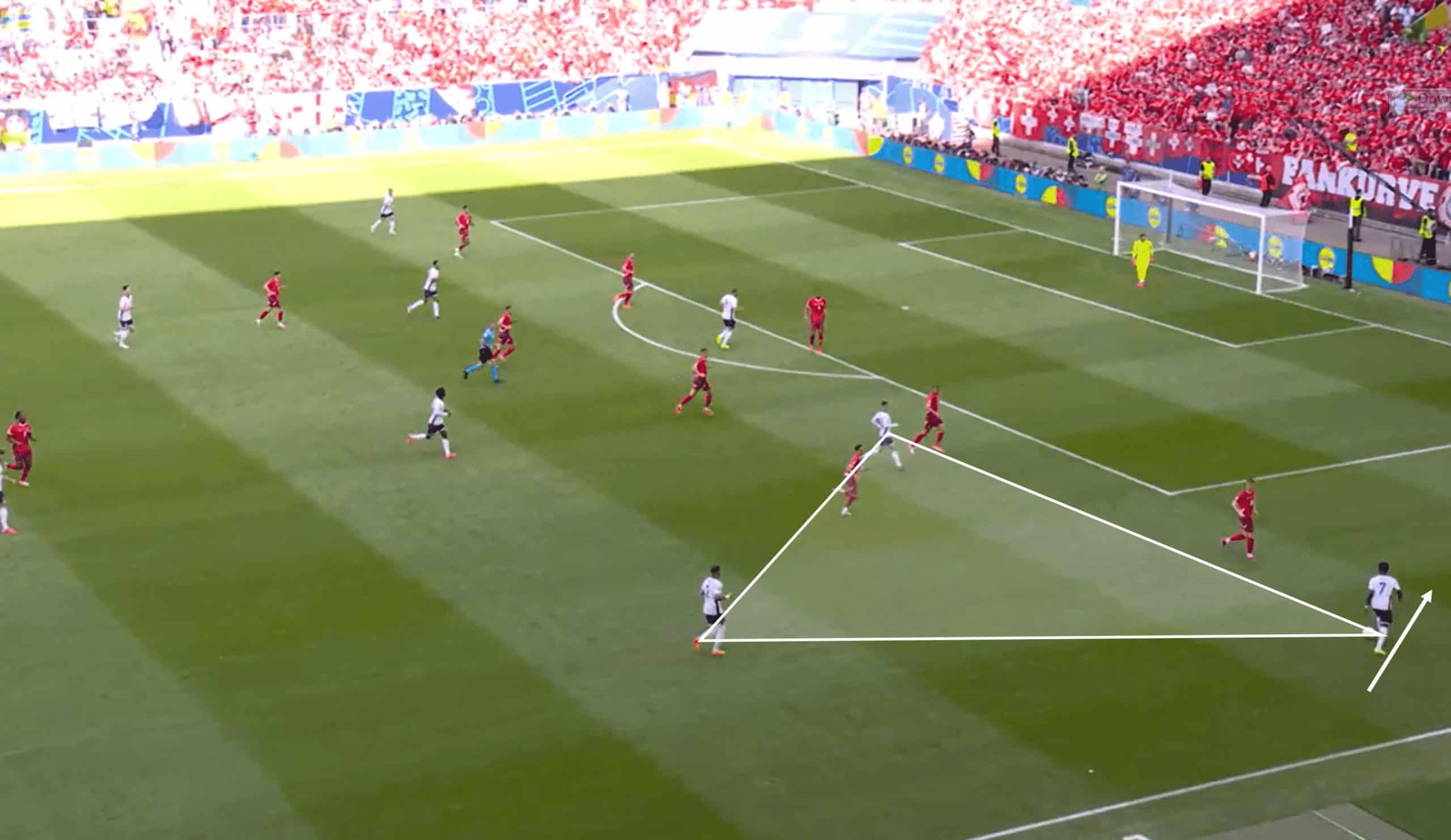
England’s formation played a role in allowing for heavy attacking support in wide areas against the Swiss, but so did an increase in positive play and confidence in attack—something they must look to maintain if they revert to a 4-2-3-1 against the Dutch.
Saka was outstanding in the quarter-finals – it seemed as though Southgate had finally found a way to get the flanks (particularly the right flank) involved consistently in build-up and attack. The example above shows us how England can provide a good support structure in attack with Saka having nearby support from Kyle Walker and Phil Foden – even though Foden is tucked inside and marked; his positioning leaves Saka in a 1v1 rather than being doubled up on.
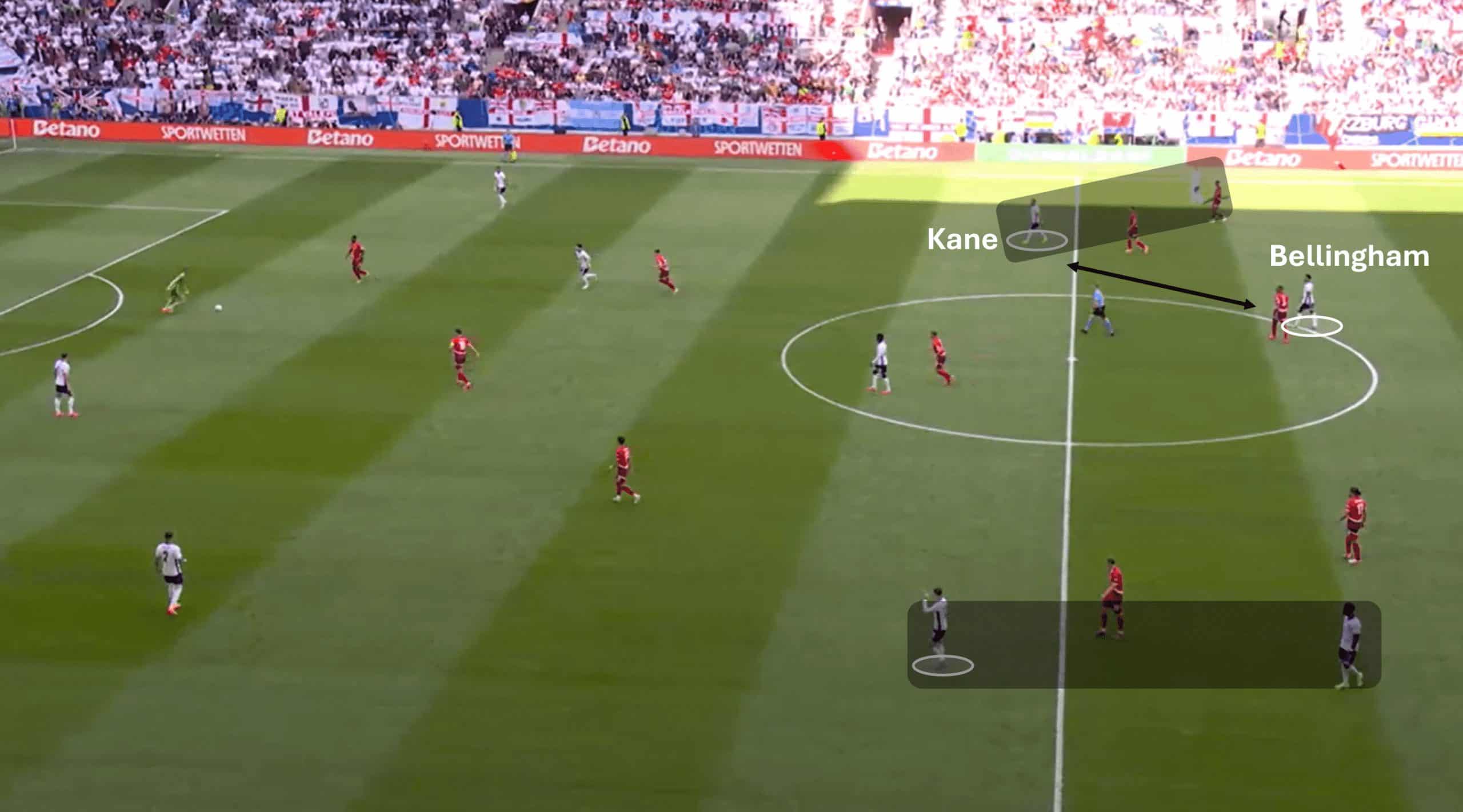
In England’s 3-4-3 against Switzerland, although Harry Kane was the designated CF with support coming from Foden and Jude Bellingham, the Bayern Munich player could often be seen alternating positions with the Real Madrid man, which proved (potentially) beneficial in certain build-up scenarios.
The example above shows us this: We know Kane has the tendency to drop slightly deeper to receive the ball. While some England fans seem to loathe this, it is simply part of Kane’s game, and he has been a positive outlet for England when they look to break into midfield quickly. Kane’s passing range and creative ability are often under-appreciated, but he does have the ability to pick out a dangerous pass. His temporary role switch with Bellingham in these deep build-up areas gives England the chance to get Bellingham in behind the defence and through on goal.
Now, even if England go back to the 4-2-3-1 in the semi-final, they still have the opportunity to execute this tactical move, and with the Dutch’s likely high press, this Kane-Bellingham link-up could provide a quick route out of defence and into attack.
We also saw a lot of link-ups and combinations from Foden and Saka—this is something that comes with the formation used against Switzerland. While Bellingham and Foden’s roles on paper look like wingers, the presence of Kieran Trippier and particularly Saka meant that the aforementioned duo could act as attacking support in slightly more central roles (in the final third). If we see England deploy their 4-2-3-1 against the Netherlands, it is hard to imagine that we see both the Kane-Bellingham link-up and the Saka-Foden combination.
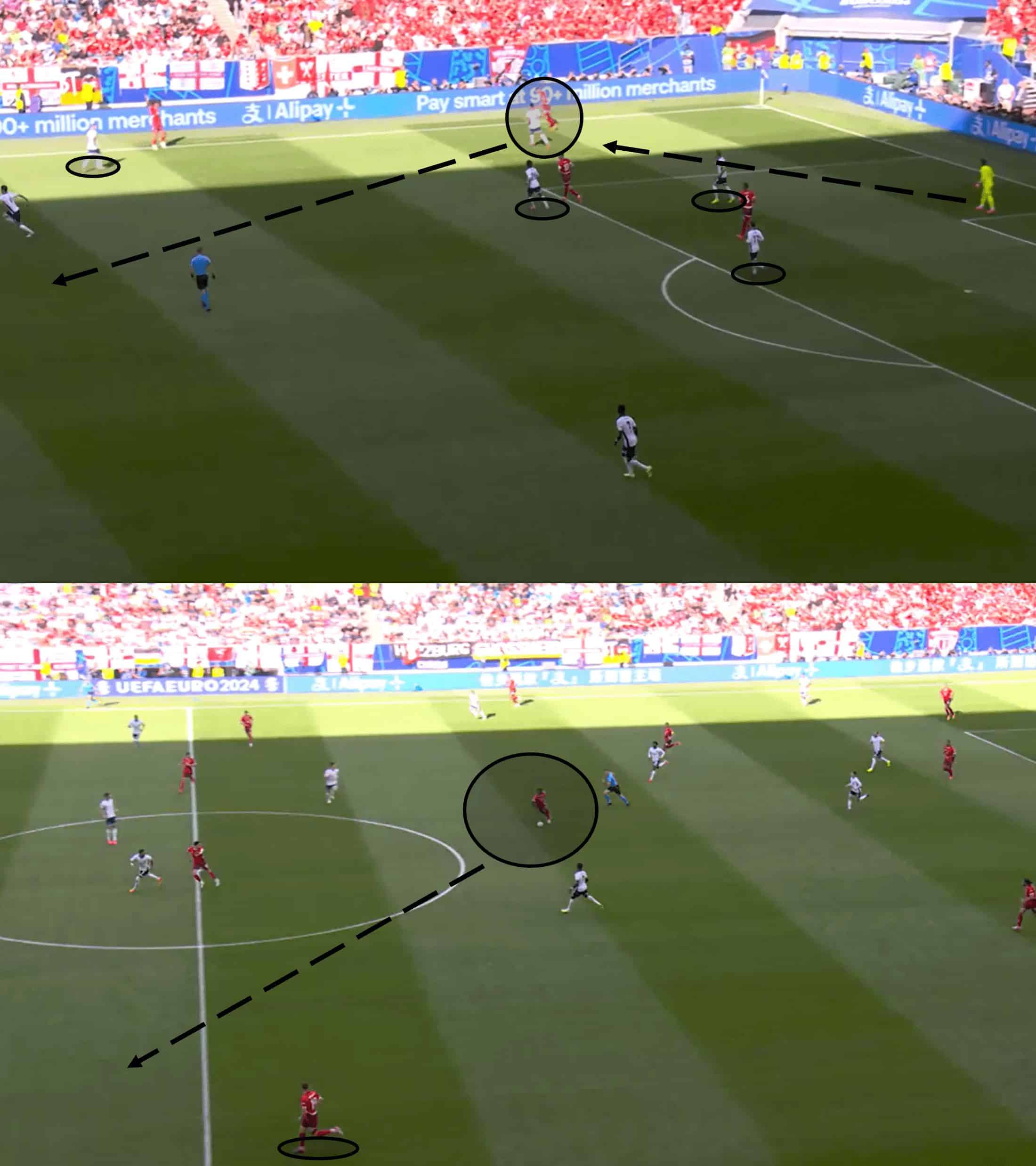
England’s PPDA against Switzerland was 15.41 – less aggressive than the games against Slovakia and Slovenia but more aggressive than the games against Denmark and Serbia. Fans have been calling for a more aggressive approach off the ball since those opening games, and they got what they wanted. However, we have seen some chinks in the armour as far as England’s high pressing goes.
Yes, Southgate’s side have benefited from pressing higher generally. It has also benefited their attacking play in parts as well, but there have been a number of times where yes, England have a heavy presence high up the pitch. Still, the positioning/set-up and execution of the press has not been good enough, and their initial press has been bypassed. We saw that against Switzerland (image above), and if England afford the same opportunity to the Netherlands, it is highly unlikely that they will be punished.
The Netherlands
Ronald Koeman will be happy to reach the final four in this tournament. While he will be very aware of England’s potential threat, he knows that generally, Southgate’s team are defensively solid and even when they aren’t at their best, their attacking unit can be extremely dangerous in key moments. What should England fans expect from the Dutch in Wednesday’s showdown? Well, the Netherlands have been one of the most active in the Euros when it comes to pressing and one of the most dangerous in the final third when it comes to shots on goal and goals themselves. As we mentioned in the intro, they also have players capable of causing damage with 1v1s and dribbles.
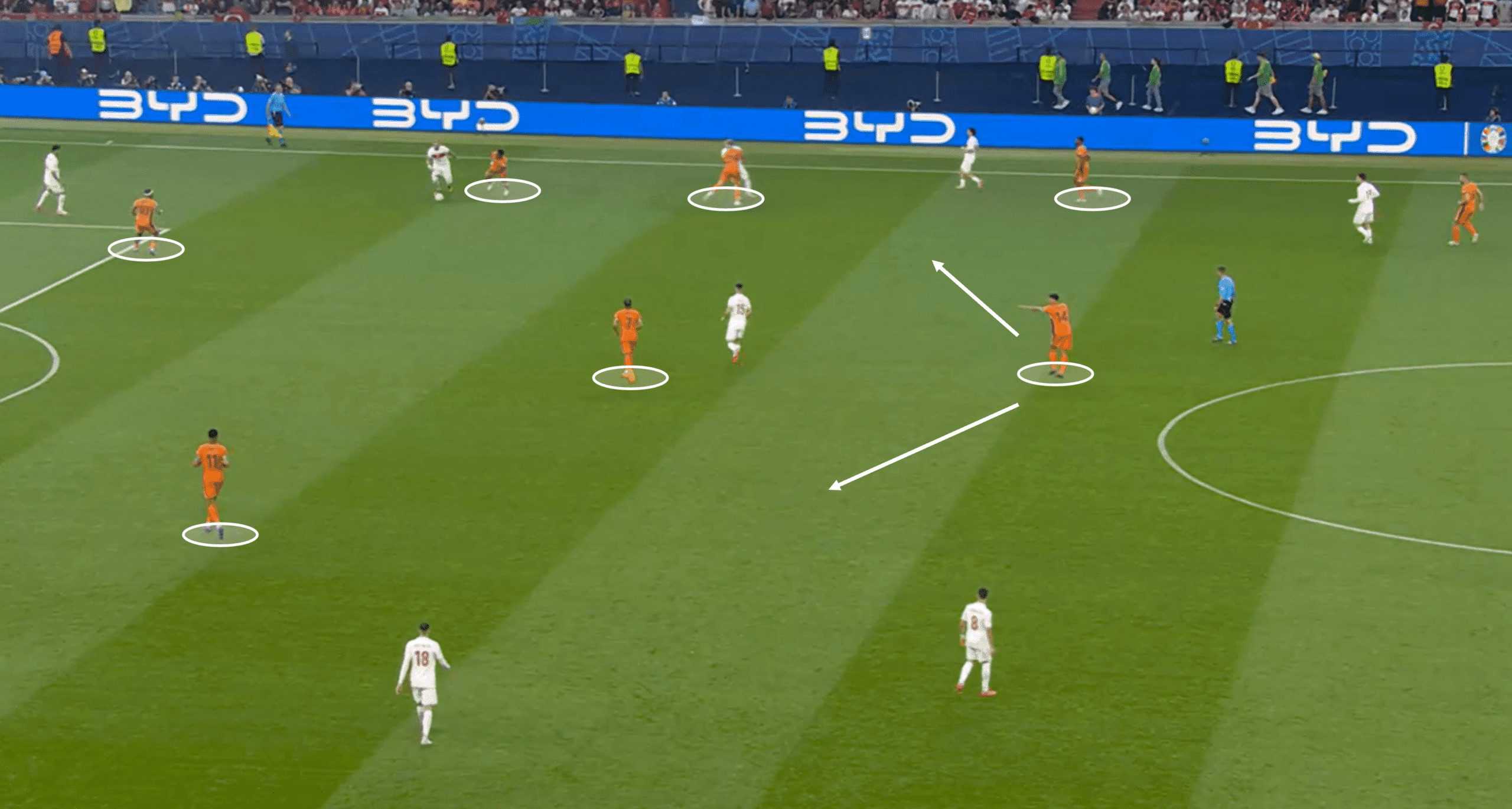
The Dutch deserve credit for their off-the-ball approach. Tournament football demands discipline, and Koeman’s team shows it in their defensive tactics. Their PPDA throughout the competition of 10.8 is the fifth lowest in the Euros, which suggests how active they are when the opponent has possession.
They also love a counterpress – their ability to execute initially and (if necessary) maintain that pressure could be a big problem for England – if Trippier starts in that LB slot, we could see the Dutch try and force England’s possession over to Trippier, knowing that he will look to play into a central area, in which, orange shirts would likely be present to swarm the white shirts.
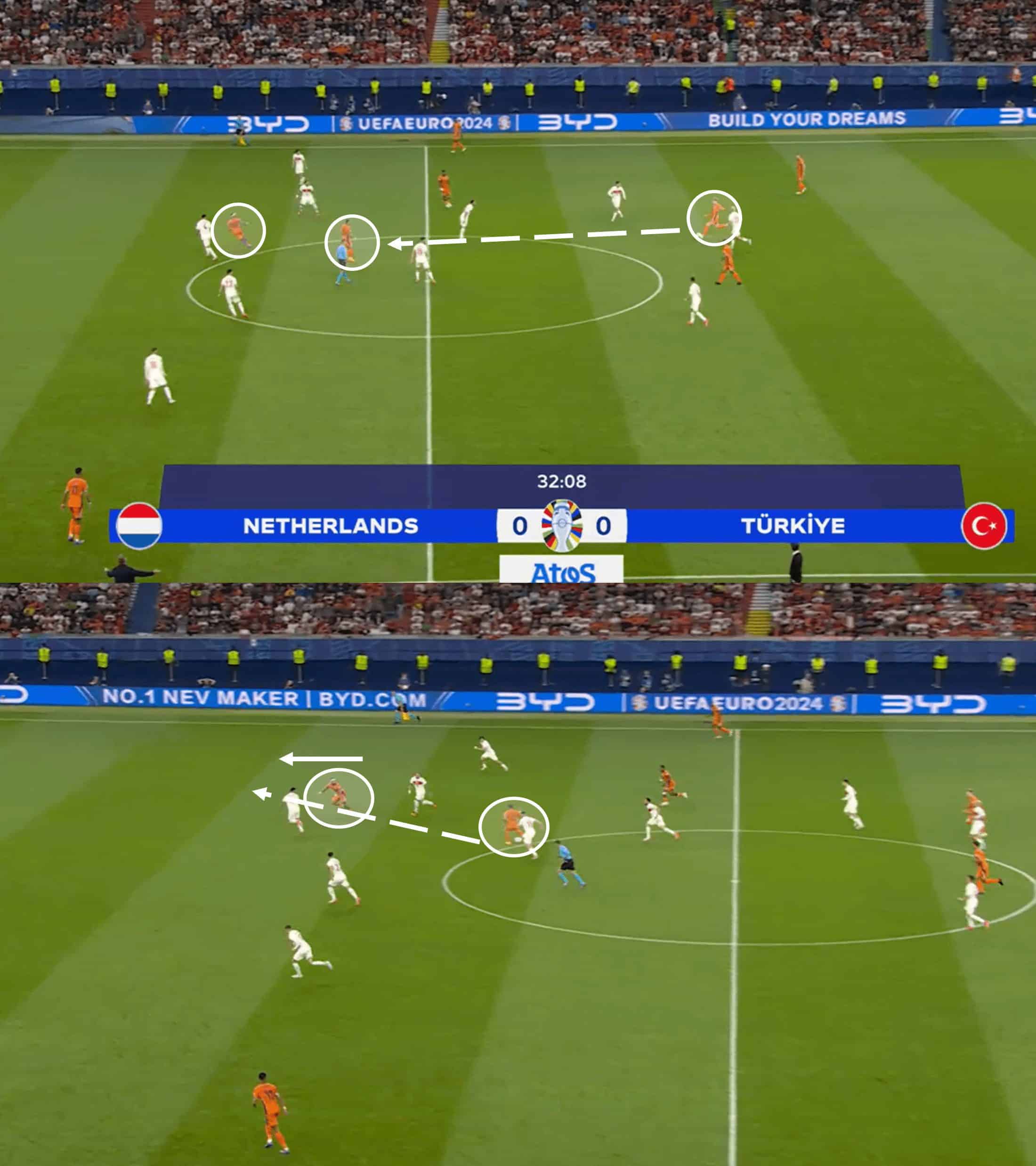
Line-breaking passes isn’t something we’ve seen enough of from England, and it is something the Dutch have in their repertoire. Whether it’s Xavi Simons or Tijjani Reijnders in that number 10 role for Koeman’s side, they both have the capacity to drift into pockets of space in midfield and receive well-executed passes from deeper areas.
This type of attacking approach can provide a huge injection of speed and urgency to proceedings, turning the phase from safe possession to a genuine attacking opportunity – the example above shows us Simons collecting that line-breaking pass on the half-turn before immediately looking to send Memphis Depay through on goal. This is something that England must be prepared for – Declan Rice and (likely) Kobbie Mainoo will have a huge defensive responsibility in this regard.
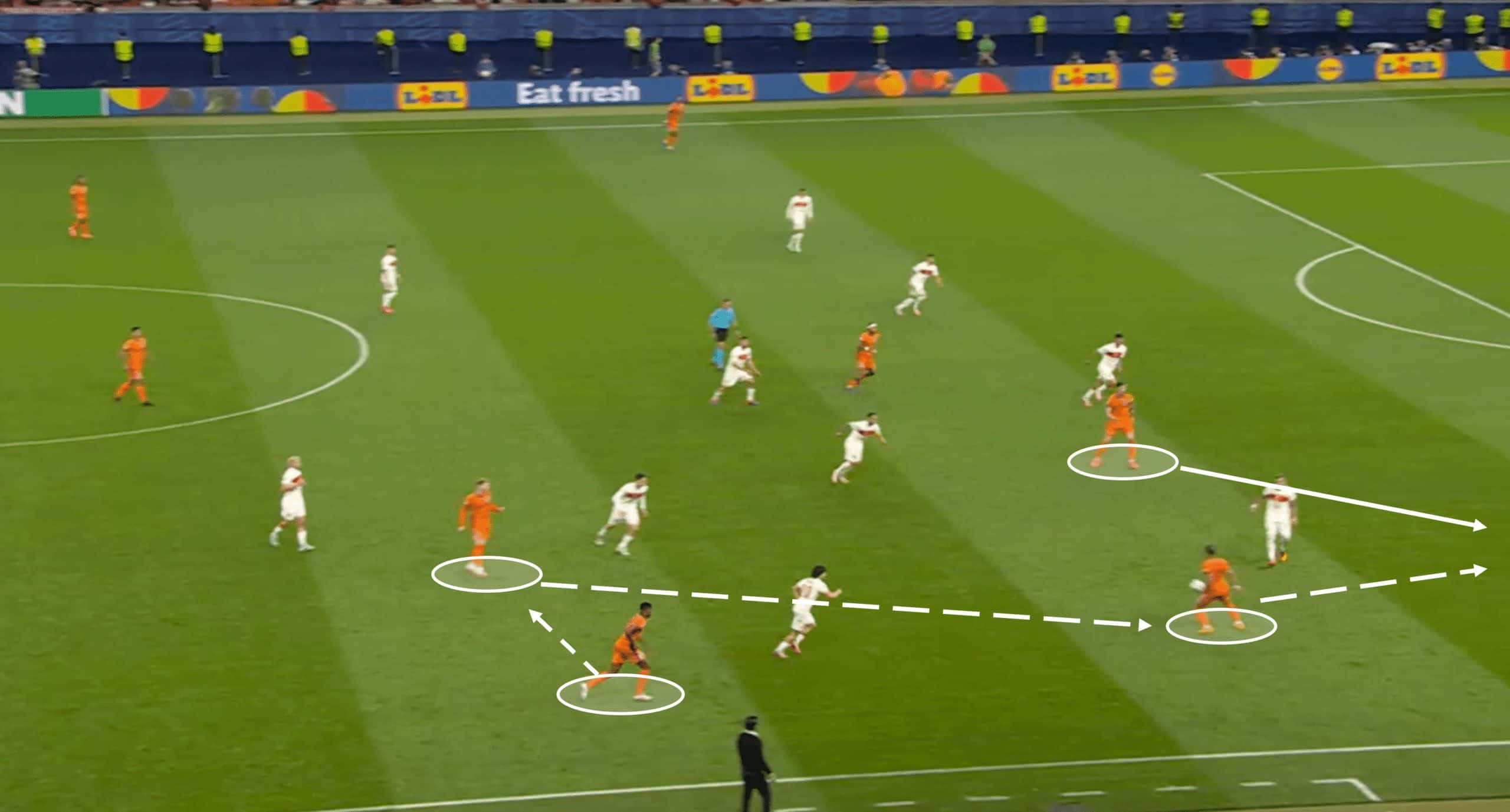
Quick attacks are something that the Dutch can execute in the blink of an eye. While they do sometimes struggle for consistency in doing so, when they get it right, it is a joy to watch and a nightmare to defend against.
Clever off-the-ball movements and awareness of teammates’ positioning allow for dangerous passing combinations, just like the one you see above – just three passes and the Netherlands found themselves in a dangerous attacking situation. Again, England’s midfield could have a job on their hands with this, but Southgate’s team must be careful not to be dragged too deep too often, thereby handing the Dutch the majority of possession throughout the game.

So far in this tournament, Ronald Koeman’s side have averaged 26 1v1s/dribbles per 90 – the fourth-highest in the competition. This tells us that Koeman has allowed his players that creative freedom in possession, and with the technical talent at his disposal, why wouldn’t he? The front four in their 4-2-3-1 are all often confident and capable of effective take-ons in midfield and the final third, and their wide men, in particular, show an attacking aggression with the ball.
The visual above shows us the dribbling maps for Cody Cakpo and Donyell Malen. As you can see and will have seen in their games this summer, the wide pair love to run at the opposition. Kyle Walker (if England play the 4-2-3-1) and Trippier will both have to be prepared for such 1v1 situations but the pair have been more than solid in defence for Southgate’s team, so they should be able to nullify that threat.
Conclusion
This game could bring the best out of England. With all due respect to their previous opponents in the Euros this year, the Netherlands are their toughest test by some distance. Will Southgate allow his players to build on the attacking momentum from the game against Switzerland, or will he look to play it safe and focus on the defensive side of the game to try and keep the Dutch out?
A defensive approach from England could provide the Dutch with the ammo they need to hurt Southgate’s team. They have the pace to handle an England counterattack and good movement to be effective inside the box. Both teams will have to be at their best defensively, but in attack, we could be talking about one moment of magic that wins the game.






Comments